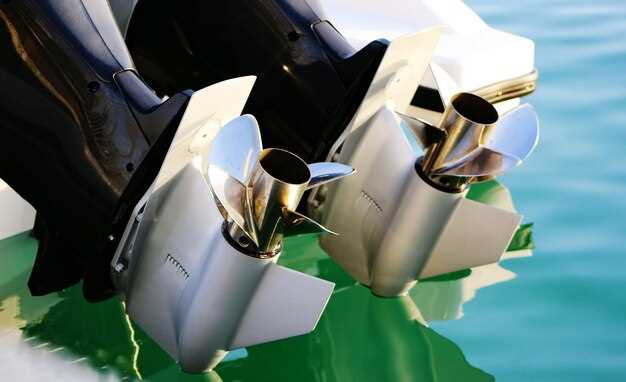
When it comes to choosing an outboard motor, two names stand out in the industry: Yamaha and Mercury. Both brands have established a reputation for excellence, reliability, and innovation, making them the top choices for boaters around the world. This comparison guide aims to provide a comprehensive overview of the features, performance, and value offered by Yamaha and Mercury outboard motors, helping you make an informed decision for your boating needs.
Yamaha has a long history of producing high-quality marine engines that emphasize durability and smooth operation. Known for their innovative technologies and fuel-efficient designs, Yamaha outboard motors are engineered to deliver reliable performance under various conditions. Whether you are navigating calm lakes or rugged coastal waters, Yamaha offers a diverse range of models that cater to different boating lifestyles.
On the other hand, Mercury outboard motors are celebrated for their powerful performance and cutting-edge features. With a strong focus on advancing marine technology, Mercury provides a selection of motors that excel in speed and agility. Their outboards are designed for serious enthusiasts who require robust motors capable of handling demanding environments. This guide will dissect the key differences and similarities between Yamaha and Mercury outboards, examining aspects such as design, technology, and customer satisfaction.
Performance Metrics: Speed and Fuel Efficiency Analysis
When comparing Yamaha and Mercury outboard motors, a key consideration is their performance metrics, particularly speed and fuel efficiency. Both brands offer a range of engines catering to various boating needs, but they exhibit distinctive characteristics that can influence a buyer’s decision.
Speed is often a priority for boaters, whether for recreational activities or professional use. Mercury motors, known for their cutting-edge engineering, typically deliver faster acceleration and top speeds in many comparable models. For instance, the Mercury Verado series, equipped with supercharged four-stroke technology, outperforms several Yamaha counterparts in terms of acceleration, especially in larger engines.
On the other hand, Yamaha is renowned for its smooth power delivery and reliable performance. While some Yamaha engines may not reach the top speeds of their Mercury rivals, they often provide superior handling, making them an excellent choice for precision maneuvers in tight areas. Boat enthusiasts frequently appreciate Yamaha’s focus on balanced performance over sheer speed.
Another crucial aspect is fuel efficiency. In this arena, Yamaha generally excels with its Variable Camshaft Timing (VCT) technology, which optimizes fuel consumption at various RPM levels. Many Yamaha models are designed to provide excellent fuel economy, making them suitable for long hours on the water, where saving on fuel costs becomes vital.
Conversely, while Mercury motors may prioritize speed, recent advancements have made them increasingly competitive in fuel efficiency. The introduction of their SmartCraft technology enhances fuel management systems, allowing optimization based on real-time conditions. Users see improved fuel economy at cruising speeds, making Mercury a viable option for those balancing speed and efficiency.
Ultimately, the choice between Yamaha and Mercury outboard motors will depend on individual priorities. For those seeking maximum speed and robust acceleration, Mercury may be the optimal choice. In contrast, Yamaha tends to offer an edge in fuel efficiency and handling, appealing to users prioritizing long-distance voyages without frequent refueling.
Maintenance Requirements: Service Intervals and Costs

Both Yamaha and Mercury outboard motors require regular maintenance to ensure optimal performance and longevity. Understanding the service intervals and costs associated with each brand is critical for boat owners.
Mercury outboard motors typically recommend a service interval of 100 hours or annually, whichever comes first. During this service, key components such as oil, filters, and spark plugs are inspected and replaced if necessary. For Mercury motors, a standard service can range from $200 to $400, depending on the model and specific services performed.
In contrast, Yamaha suggests similar maintenance frequencies, with a 100-hour or annual service schedule. However, Yamaha may require more frequent attention to specific components based on usage conditions, particularly in saltwater environments. The cost of routine maintenance for Yamaha motors generally falls between $150 to $350, making it slightly more affordable in some cases.
Both manufacturers emphasize the importance of keeping the cooling system, fuel system, and electrical components in check. Mercury’s proprietary diagnostic systems can assist in identifying potential issues before they become significant, potentially saving money on repairs in the long run. Yamaha also provides advanced diagnostic tools, but service costs can vary based on dealership pricing.
When it comes to parts, Mercury may have a wider range of aftermarket options available, potentially lowering costs for replacement parts. Yamaha, however, is known for robust warranties and higher resale value, factors that may influence long-term cost considerations.
Ultimately, while both brands offer similar maintenance requirements and associated costs, individual preferences, local dealer pricing, and specific engine conditions should guide the decision for boat owners looking to maintain their outboard motors effectively.
Available Features: Technology and Customization Options

When comparing Yamaha and Mercury outboard motors, one of the most significant factors is the range of available features that enhance performance and user experience. Both brands offer advanced technology and customization options, catering to the diverse needs of boaters.
Mercury outboard motors are well-known for their innovative technology. Many models include the SmartCraft system, which integrates various functionalities such as engine diagnostics, fuel management, and navigation. This system allows boaters to monitor their engine’s performance in real-time, making it easier to manage fuel consumption and identify maintenance needs. Furthermore, Mercury provides the option of the Active Trim system, which automatically adjusts the engine’s trim angle based on speed and conditions, optimizing fuel efficiency and enhancing handling.
In terms of customization, Mercury offers an extensive selection of options, including paint colors, propeller choices, and engine configurations. This allows users to tailor their outboard motor to suit specific boating activities like fishing, recreational cruising, or racing. Additionally, Mercury provides customizable features for rigging, ensuring easier installation and compatibility with various boat models.
Yamaha also presents a comparable range of advanced features. Their Integrated Control System boasts multi-function displays, offering detailed information on engine performance and enabling smoother operation through joystick control in specific models. Yamaha’s Command Link technology enhances user experience with easy access to engine information and diagnostics, similar to Mercury’s SmartCraft system.
Customization options with Yamaha include various digital and mechanical controls, allowing users to select the setup that best fits their preferences. Yamaha motors also come with a wide selection of propellers and performance enhancement kits, ensuring that any motor can be specifically tuned for optimal performance based on the boat’s intended use.
Ultimately, both Yamaha and Mercury outboard motors provide impressive technology and customization options. Choosing between the two comes down to specific features that best meet the boater’s individual needs, as both brands continue to innovate and improve their offerings.



